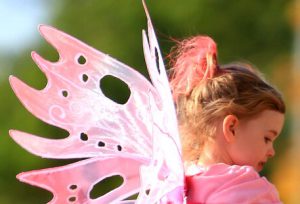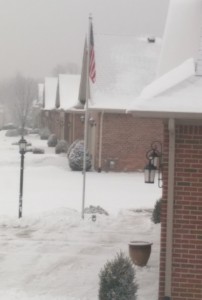Sometimes, as a meditation, I imagine myself turning to the four directions and asking each of them what it has to say to me. I always start in the East, as the direction of the dawn and new beginnings, and go clockwise from there.
When I last pictured myself facing the dawn, I was walking through a bright green meadow full of wildflowers on a clear spring day. Then I noticed that, for some reason, I had butterfly wings attached to my shoulders, like a child in a costume.

(Photo credit: Sangudo)
Unlike a costume, however, the wings were functional. I was holding some sort of futuristic control device that made the wings fly me high above the meadow.
“The future holds so many fun adventures to discover,” the East whispered on a joyful breeze.
Thanking the East, I turned toward the South, the direction of summer’s heat.
I was barefoot now, and the earth under my feet was pleasantly warm. Closing my eyes, I wanted to stand for a little while and enjoy the feeling.
“It’s okay to just relax sometimes,” the South told me in a comfortable, reassuring tone. “The future will find you anyway; there’s no need to be searching for it at all times.”
Although I was tempted to stay longer, I still had two more directions to visit. I opened my eyes and moved on to the West, the direction of cool winds of change.
I stood watching autumn leaves as they fell, but other than the leaves, nothing much seemed to be happening around me. I wondered what, if anything, I was supposed to be doing.
“Hold space for it,” the West kindly advised.
With my thanks, I turned away to face the North, the direction of winter’s cold and renewal. Rain was falling, and I heard a stream rushing somewhere nearby, quick with snowmelt. Then, suddenly, all was silent.
“You don’t need to listen for it, either,” the North murmured. “It will find you.”












